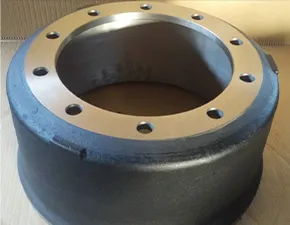
-
 Afrikaans
Afrikaans -
 Albanian
Albanian -
 Amharic
Amharic -
 Arabic
Arabic -
 Armenian
Armenian -
 Azerbaijani
Azerbaijani -
 Basque
Basque -
 Belarusian
Belarusian -
 Bengali
Bengali -
 Bosnian
Bosnian -
 Bulgarian
Bulgarian -
 Catalan
Catalan -
 Cebuano
Cebuano -
 Corsican
Corsican -
 Croatian
Croatian -
 Czech
Czech -
 Danish
Danish -
 Dutch
Dutch -
 English
English -
 Esperanto
Esperanto -
 Estonian
Estonian -
 Finnish
Finnish -
 French
French -
 Frisian
Frisian -
 Galician
Galician -
 Georgian
Georgian -
 German
German -
 Greek
Greek -
 Gujarati
Gujarati -
 Haitian Creole
Haitian Creole -
 hausa
hausa -
 hawaiian
hawaiian -
 Hebrew
Hebrew -
 Hindi
Hindi -
 Miao
Miao -
 Hungarian
Hungarian -
 Icelandic
Icelandic -
 igbo
igbo -
 Indonesian
Indonesian -
 irish
irish -
 Italian
Italian -
 Japanese
Japanese -
 Javanese
Javanese -
 Kannada
Kannada -
 kazakh
kazakh -
 Khmer
Khmer -
 Rwandese
Rwandese -
 Korean
Korean -
 Kurdish
Kurdish -
 Kyrgyz
Kyrgyz -
 Lao
Lao -
 Latin
Latin -
 Latvian
Latvian -
 Lithuanian
Lithuanian -
 Luxembourgish
Luxembourgish -
 Macedonian
Macedonian -
 Malgashi
Malgashi -
 Malay
Malay -
 Malayalam
Malayalam -
 Maltese
Maltese -
 Maori
Maori -
 Marathi
Marathi -
 Mongolian
Mongolian -
 Myanmar
Myanmar -
 Nepali
Nepali -
 Norwegian
Norwegian -
 Norwegian
Norwegian -
 Occitan
Occitan -
 Pashto
Pashto -
 Persian
Persian -
 Polish
Polish -
 Portuguese
Portuguese -
 Punjabi
Punjabi -
 Romanian
Romanian -
 Russian
Russian -
 Samoan
Samoan -
 Scottish Gaelic
Scottish Gaelic -
 Serbian
Serbian -
 Sesotho
Sesotho -
 Shona
Shona -
 Sindhi
Sindhi -
 Sinhala
Sinhala -
 Slovak
Slovak -
 Slovenian
Slovenian -
 Somali
Somali -
 Spanish
Spanish -
 Sundanese
Sundanese -
 Swahili
Swahili -
 Swedish
Swedish -
 Tagalog
Tagalog -
 Tajik
Tajik -
 Tamil
Tamil -
 Tatar
Tatar -
 Telugu
Telugu -
 Thai
Thai -
 Turkish
Turkish -
 Turkmen
Turkmen -
 Ukrainian
Ukrainian -
 Urdu
Urdu -
 Uighur
Uighur -
 Uzbek
Uzbek -
 Vietnamese
Vietnamese -
 Welsh
Welsh -
 Bantu
Bantu -
 Yiddish
Yiddish -
 Yoruba
Yoruba -
 Zulu
Zulu
drum brake convert to disc
Converting Drum Brakes to Disc Brakes A Comprehensive Overview
The debate over drum brakes versus disc brakes has been ongoing in the automotive world for decades. While drum brakes have been a traditional choice for many vehicles, the advantages of disc brakes have led to a growing trend of conversion. This article delves into the reasons behind the conversion from drum brakes to disc brakes, detailing the benefits, challenges, and overall implications of this improvement in brake technology.
Advantages of Disc Brakes
One of the primary reasons for converting drum brakes to disc brakes is the improved performance and safety associated with disc braking systems. Disc brakes offer superior stopping power due to their design, which allows for better heat dissipation. When brakes are applied, friction generates heat, and excessive heat can lead to brake fade—a reduction in braking efficiency. Disc brakes, being exposed to airflow, are less prone to this issue, offering consistent performance even under heavy use.
Moreover, disc brakes provide better wet weather performance. When driving in rain or snow, drum brakes can accumulate moisture, leading to reduced stopping power. Disc brakes, on the other hand, clear water away more effectively, ensuring that the braking system remains reliable regardless of the conditions.
Enhanced Maintenance and Longevity
Another benefit of disc brakes is the ease of maintenance. Disc brake components are generally simpler to replace and inspect than those in drum brake systems. The open design of disc brakes makes it easy to see wear and tear, allowing for timely maintenance. Drum brakes, with their enclosed structure, can conceal issues until they become serious, leading to potentially hazardous situations.
drum brake convert to disc

Additionally, disc brakes tend to have a longer lifespan than drum brakes. The absence of the complex mechanisms found in drum brakes—such as springs, levers, and adjusters—means fewer components to wear out or fail.
Challenges in Conversion
While the benefits of converting from drum to disc brakes are compelling, the process is not without challenges. One of the primary considerations is compatibility. Not all vehicles are designed to accommodate disc brakes, and modifications may be necessary. This could include changing brake lines, wheel hubs, or even suspension components to ensure proper fitment and performance.
Cost is another factor to consider. Converting to disc brakes often requires a significant investment in parts, tools, and potentially professional labor. However, many enthusiasts and performance-minded drivers find this investment worthwhile for improved safety and handling.
Conclusion
In conclusion, converting drum brakes to disc brakes presents numerous advantages that enhance vehicle safety, performance, and maintenance. While the challenges of compatibility and cost must be addressed, the upgrade can lead to a more efficient and reliable braking system. For those looking to improve their vehicles’ braking performance, this conversion is undoubtedly a step in the right direction, aligning with modern automotive safety standards and driving expectations. As technology continues to evolve, the shift towards disc brakes is likely to become even more prevalent in the automotive industry.
-
What Are Drum BrakesNewsJul.07,2025
-
Understanding Brake Drum MaterialNewsJul.07,2025
-
Semi-Trailer Brake Drum: A Key Component for Extreme Loads and Long-Distance TransportNewsJul.07,2025
-
Drum Brake Pads for SaleNewsJul.07,2025
-
Brake Drums for SaleNewsJul.07,2025
-
Brake Drum ManufacturerNewsJul.07,2025
-
Aluminum Brake Drums: The Future of High-Performance CarsNewsJul.07,2025
